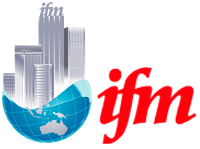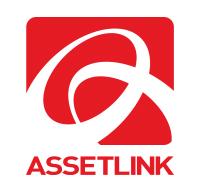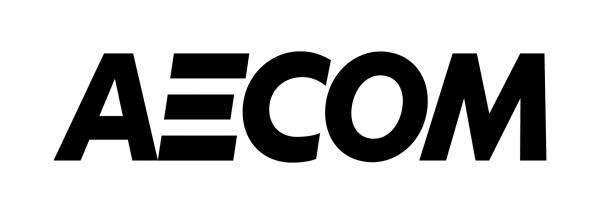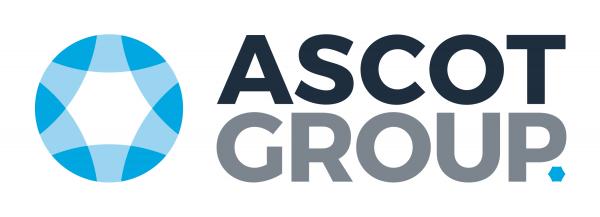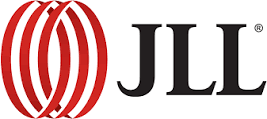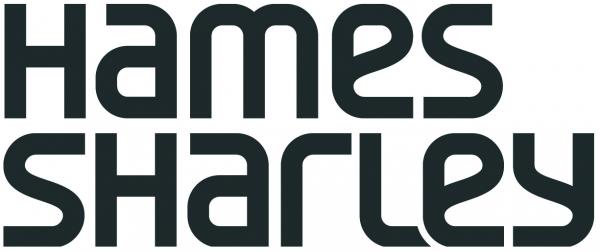*Under Construction*
TEFMA Glossary of Terms
For further definitions and more information on how the benchmarks is calculated, please click here.
Term | Definition |
|---|---|
| Activity Management | The coordinated management of activities of an organisation to deliver on its objectives |
| Activity Settings or Activity Based Working "ABW" | Recognises that people undertake different activities during their workday and therefore require a variety of worksettings to support these different activities, e.g., focus, collaboration, social etc. Departments or teams are typically located in ‘neighbourhoods’. These are dedicated areas that contain worksettings, zones, and rooms the team needs to undertake their work. The workstations in an ABW setting are unassigned. |
| Advanced Asset Management | Asset management which employs predictive modelling, risk management and optimised decision-making techniques to establish asset lifecycle treatment options and related long term cashflow predictions. |
| Appropriate Asset Management Practice | The level of AM practice development (aware-advanced) which is considered optimal for the specific organisation. |
| Asset | An item, thing or entity that has potential or actual value to an organisation. |
| Asset Hierarchy | A framework for segmenting an asset base into appropriate classifications. The asset hierarchy can be based on asset function; asset type or a combination of the two. |
| Asset Life | Period from asset creation to asset end-of-life (cradle to grave). |
| Asset Management | The systematic and coordinated activities and practices of an organisation to deliver on its objectives optimally and sustainably through the cost-effective lifecycle management of assets. |
| Asset Management Framework | The overarching AM hierarchy including the AM Policy, Objectives, Strategy, and the AM Plan. |
| Asset Management Information System | A combination of processes, data, software, and hardware applied to provide the essential outputs for effective AM. |
| Asset Management Objectives | Results to be achieved with respect to asset management. |
| Asset Management Plan | ISO 55001 (2014) defines an asset management plan as documented information that specifies the Activities, Resources and Timescales required for an asset class (or individual asset or asset system), to achieve the organisation’s asset management objectives: The asset management plan is one element of the organisation’s overall asset management system. |
| Asset Management Policy | A high-level statement of an organisation’s principles and approach to asset management. |
| Asset Management Practices | The AM processes and techniques that an organisation undertakes, as outlined in this Manual, such as demand forecasting, developing, and monitoring levels of service, risk management. |
| Asset Management System | A set of interrelated or interacting elements of an organisation, including the AM policy, AM objectives, AM Strategy, AM Plans, and the processes to achieve these objectives. |
| Asset Portfolio | Assets that are within the scope of the asset management system. |
| Asset Register | A record of asset information, typically held in a spreadsheet, database, or software system, including asset attribute data such as quantity, type, and construction cost. |
| Asset Replacement Value (ARV) | The cost of rebuilding or replacing an existing capital asset to its initial standard. |
| Asset Resilience | The ability of the asset / physical system(s) to perform to an acceptable/desired level when subject to a hazard event. |
| Asset Type | Grouping of assets having common characteristics that distinguish those assets as a group or class. |
| ATN | The Australian Technology Network, comprising 5 institutions. |
| Audit | Systematic, independent, and documented process for obtaining audit evidence and evaluating it objectively to determine the extent to which the audit criteria are fulfilled. |
| Backlog Liability (Access and Equity of access) | All works necessary to meet current access codes or standards. Includes all areas of non-compliance regardless of whether the building satisfied extant standard at the time of construction. |
| Backlog Liability (Maintenance) | Maintenance that is necessary to prevent the deterioration of the asset or its function but which has not been carried out. Includes all outstanding maintenance works listed on the institution’s Backlog Maintenance Register. |
| Backlog Liability (Non-Statutory Refurbishment) | Refurbishments that are necessary to bring a room, building or service up to a new standard or alter it for a new use but which have not been carried out due to a lack of funding or other competing institutional priorities. Works necessary to address functionality issues. Institutions are not obliged to address these works on legislative or statutory grounds. |
| Built Environment | Refers to surroundings created for humans, by humans and to be used for human activity. Examples include cities, buildings, urban spaces, walkways, roads, parks, etc. |
| Business Continuity Plan | Plans developed to ensure critical services can continue to function even during unexpected events. The plans typically detail critical services and functions, ways these can potentially fail, mitigation measures and processes or work-arounds to recover services if they do fail. |
| Business Intelligence | The techniques and tools for the transformation of raw data into meaningful and useful information for business analysis purposes. This can encompass data mining, data warehousing, analytics, querying and reporting. |
| Business Plan | A plan produced by an organisation (or business units within it) which translates the objectives contained in an Annual Plan into detailed work plans for a particular, or range of, business activities or programmes. |
| Bring Your Own Device - BYOD | Enabling students, staff and visitors to connect their own devices to WIFI anywhere on campus. |
| Capability | An organisation’s ability to achieve its objectives through the knowledge, skills, abilities, and competencies of its people. |
| Change Management | Change management is a systematic approach to dealing with transition or transformation of a University’s goals, processes or technologies. The purpose of change management is to implement strategies of effecting change and helping people to adapt to change. Often change management is implemented in parallel with a new building or refurbishment of an existing space. |
| Circulation Space | Trafficable spaces provided within a functional area to link together individual rooms or spaces, including areas occupied by internal walls. |
| Competence | Ability to apply knowledge and skills to achieve intended results. |
| Components | Specific parts of an asset having independent physical or functional identity and having specific attributes such as different life expectancy, maintenance regimes, risk, or criticality. |
| Condition | The physical state of the asset. |
| Condition Assessment | The inspection, assessment, measurement, and interpretation of the resultant data, to indicate the condition of an asset, specific element, or specific component so as to determine the need for some preventive or remedial action. |
| Condition Grade | A measure of the physical integrity of an asset or component. |
| Condition - Excellent | Asset has no defects; condition and appearance are as new. |
| Condition - Fair | Asset is in average condition; deteriorated surfaces require attention; services are functional but require attention; or backlog work exists. |
| Condition - Good | Asset exhibits superficial wear and tear, minor defects, minor signs of deterioration to surface finishes; does not require major maintenance; or no major defects exists. |
| Condition - Poor | Asset has deteriorated badly, general appearance is poor with eroded protective coatings; elements are defective; services are frequently failing and a significant number of major defects exists. |
| Condition - Very Poor | Asset is not operational and is unfit for occupancy or normal use. |
| Condition-Based Preventive Maintenance | Preventive maintenance initiated as a result of an asset reaching a specified condition. |
| Configuration Management | A systems engineering process for establishing and maintaining the consistency of a product’s performance, functional and physical attributes with its requirements, design, and operational information throughout its life. |
| Conformity | Fulfilment of a requirement. |
| Consequence | A result or effect or outcome of an event. |
| Continual Improvement | Recurring activity to enhance performance. |
| Core Asset Management | Asset management which relies primarily on the use of an asset register, maintenance management systems, top-down condition assessment, simple risk assessment and defined levels of service, in order to establish a long-term cashflow projection. |
| Corrective Maintenance | The remedial actions performed as a result of failure, to restore an asset or component to a specified condition. |
| Co-working Workplace | The use of an office or other work environment by people who are self-employed or working for different employers, typically so as to share equipment, ideas and knowledge. The aim of co-working is to bring creative people together to collaborate and innovate. |
| Critical Assets | Those assets that are likely to result in a more significant financial, environment and social cost in terms of impact on organisational objectives. |
| DDA | Disability Discrimination Act. Ensures that new buildings and major refurbishments are designed for inclusive access for all people of all abilities. |
| Decommission | Actions required to take an asset out of service. |
| Demand Management | Actions taken to influence demand for services and assets, often undertaken as part of sustainability initiatives and/ or to avoid or defer required asset investment. Demand management may be ‘SUPPLY-SIDE’ demand Management (for example minimising wastage through pipe leak detection or customer DEMAND-SIDE management, to reduce demand for over-utilised assets or vice versa (for example through pricing, regulation, education, and incentives). |
| Depreciation | The systematic allocation of the depreciable amount of an asset over its useful life. |
| Deterioration Rate | The rate at which an asset approaches failure (end of life). |
| Discount Rate | A rate used to relate present and future money values, e.g. to convert the value of all future dollars to the value of dollars at a common point in time, usually the present. |
| Discounted Cashflow | A methodology whereby the future cash flows over the analysis period are discounted to present values and then summed to yield the present value (PV) of the timestream of costs or benefits. |
| Discounting | A technique for converting cash flows that occur over time to equivalent amounts at a common point in time. |
| Disposal | Actions necessary to decommission and dispose of assets that are no longer required. |
| Divestment | Action or process of selling an investment or asset that is no longer required. |
| Documented Information | Information required to be controlled and maintained by an organisation and the medium on which it is contained. |
| Economic Life | The period from the acquisition of the asset to the time when the asset, while physically able to provide a service, ceases to be the lowest cost alternative to satisfy a particular level of service. The economic life is at the maximum when equal to the physical life, however obsolescence will often ensure that the economic life is less than the physical life. |
| Effectiveness | Extent to which planned activities are realised and planned results achieved. |
| Enclosed office or 'Cellular' Workplace | Enclosed office or ‘Cellular’ Workplace workspace is comprised of allocated cellular private offices. |
| Equivalent Full Time Student Load – EFTSL (AuS) EFTS (NZ) | The measure that represents the ‘full time’ student population at a university or other higher education institution. One EFTSL is equivalent to one student who is determined to be undertaking full time classes at 100% intensity for one year. This may vary slightly between institutions, based on course structure. Includes internal and external onshore students unless otherwise designated. |
| Facilities Functionality Index – FFI | The ratio of total backlog liability to total deferred liability (excluding backlog liability). Provides an indication of what percentage of ARV is required to bring a portfolio of buildings back to high functionality. For example, an FFI of 0.8 would indicate 20% of ARV is needed to bring the portfolio back to high functionality. |
| Facility | A place, amenity, or piece of equipment provided for a particular purpose. |
| Fully Enclosed Area - FECA | (m²) The sum of all areas at each building floor level, including all fully enclosed and usable floor space. |
| Full Time Equivalent – FTE | The measure that represents the full time staff population at a university or other institution. One FTE is equivalent to one full time worker, which may be comprised of a number of part time workers. |
| Functionality – Excellent | The room/area functionality always meets the targeted spatial relationships/provision/environmental comfort standards for the space sub-type; legislative compliance is always met; building aesthetics are excellent. |
| Functionality – Fair | The room/area functionality always meets the minimum special relationships/provision/environment comfort standards for the space sub-type; legislative compliance is always met; building aesthetics are adequate. |
| Functionality – Good | The room/area functionality mostly meets the targeted spatial relationships/ provision/environmental comfort standards for the space sub-type; legislative compliance is always met; building aesthetics are good. |
| Functionality – Poor | The room/area functionality always meets the minimum special relationships / provision/environment comfort standards for the space sub-type; legislative compliance is mostly met; building aesthetics are barely adequate. |
| Functionality – Very Poor | The room/area functionality always meets the minimum special relationships / provision/environment comfort standards for the space sub-type; legislative compliance is rarely met; building aesthetics are poor. |
| Gap Analysis | A method of assessing the gap between an organisation’s current AM practices and the future desirable AM practices. Also called AM ‘needs analysis’ or ‘status assessment’. |
| GFA | Gross Floor Area. |
| Go8 | The Group of Eight - comprising 8 institutions. |
| Hazard | The potential occurrence of a natural or human-induced physical event or trend or physical impact that may cause loss of life, injury, or other health impacts, as well as damage and loss to property, infrastructure, livelihoods, service provision, ecosystems, and environmental resources. |
| Hoteling Workplace | Hoteling workplace consists of worksettings, spaces and rooms available for a temporary period of time. |
| Hot Desking Workplace | Hot Desking Workplace is the practice whereby people use unassigned workstations for a temporary period of time. |
| Hybrid Workplace | A flexible model which incorporates elements of the other workplace models listed here. It supports a mix of workstyles and personal working preferences. It also supports all aspects of a distributed workforce, including people working in the office and people working remotely. |
| Incident | Unplanned event or occurrence resulting in damage or other loss. |
| Infrastructure Assets | Stationary systems forming a network or a portfolio of assets serving whole communities, where the system as a whole is intended to be maintained indefinitely at a particular level of service potential by the continuing replacement and refurbishment of its components. The network may include normally recognised ordinary assets as components. |
| Intervention Levels | Identify the point where the performance against the level of service warrants intervention. |
| IRU | Innovative Research Universities, comprising 8 institutions. |
| Key Performance Indicator (KPI) | A performance measure that is considered important to the organisation (see performance measure). |
| Leadership | A process of guiding and maximising the efforts of a team towards the achievement of a shared vision. |
| Level of Risk | The level of risk is its magnitude. It is estimated by considering and combining consequences and likelihoods. A level of risk can be assigned to a single risk or to a combination of risks. A consequence is the outcome of an event and has an effect on objectives. Likelihood is the chance that something might happen. |
| Level of Service | The parameters or combination of parameters that reflect social, political, economic, and environmental outcomes that the organisation delivers. Levels of service statements describe the outputs or objectives an organisation or activity intends to deliver to customers. |
| Life | A measure of the anticipated life of an asset or component; such as time, number of cycles, distance intervals, etc. |
| Lifecycle | The time interval that commences with the identification of the need for an asset and terminates with the decommissioning of the asset or any liabilities thereafter. |
| Lifecycle Asset Management | Encompasses all AM strategies and practices associated with an asset or group of assets that results in the lowest lifecycle cost |
| Lifecycle Cost | The total cost of an asset throughout its life including planning, design, construction, acquisition, operation, maintenance, rehabilitation, and disposal costs. |
| Maintenance | All actions necessary for retaining an asset as near as practicable to its original condition but excluding rehabilitation or renewal. Maintenance does not increase the service potential of the asset or keep it in its original condition, it slows down deterioration and delays when rehabilitation or replacement is necessary. |
| Maintenance Objectives | Objectives for what maintenance has to achieve to ensure the assets are in the right condition to meet the needs of the organisation. Maintenance performance measures and targets are the means of assessing whether the maintenance objectives are being met. |
| Maintenance Plan | Details the specific planned and unplanned maintenance actions for an asset or facility. |
| Maintenance Strategy | Identifies the tactics and tools that will be used to deliver the maintenance plan, as well as defining the maintenance roles and responsibilities |
| Management System | Set of interrelated or interacting elements of an organisation to establish policies and objectives and processes to achieve those objectives. |
| Market Value | The estimated amount at which an asset would be exchanged on the date of valuation, between a willing buyer and a willing seller, in an arm’s length transaction and when the parties have each acted knowledgeably, prudently and without compulsion. Market value is based on highest and best use of the asset and not necessarily the existing uses. |
| Measurement | Process to determine value. |
| Mitigation | Measures taken in advance of disasters to reduce their impacts. |
| Monitoring | Determining the status of a system, process, or activity. |
| Natural Environment | Refers to the non-human-made surroundings and conditions in which all living and non-living things exist on Earth |
| Net Lettable Area - NLA | (m²) The net lettable area of a building is the sum of its whole floor lettable areas (see Chapter 6 for detailed definition and diagrams). |
| Non-Conformity | Non-fulfilment of a requirement. |
| Non Usable Floor Area - NUFA | (m²) Total floor area inside the building envelope related to the primary function of the building, which may include FECA and UCA, but excludes the external walls and the roof. Non-habitable service and common use areas are types of non-usable area. |
| NZ | The Aotearoa / New Zealand Institutions, comprising 14 institutions. |
| Objective | Results to be achieved. |
| Operation | The active process of utilising an asset which will consume resources such as manpower, energy, chemicals, and materials. |
| Open Plan Workplace | Workspace is comprised of open or semi-enclosed (e.g cubicles) workstations that are allocated to people. |
| Optimised Decision Making | Two definitions are: 1. ODM is a formal process to identify and prioritise all potential solutions with consideration of financial viability, social and environmental responsibility, and cultural outcomes. 2. An optimisation process for considering and prioritising all options to rectify existing or potential performance failure of assets. The process encompasses NPV analysis and risk assessment. |
| Organisation | Person or group of people that has its own functions with responsibilities, authorities, and relationships to achieve its objectives. |
| Organisational Objective | Overarching objective that sets the context and direction for an organisation’s activities |
| Organisational Plan | Documented information that specifies the programmes to achieve the organisational objectives. |
| Organisational Resilience | The capacity of an organisation to make decisions and take actions to plan, manage and respond to a hazard event in order to achieve the desired resilient outcomes. |
| Other | Institutions not affiliated to any group, comprising 11 institutions. |
| Outsourcing | Supplementing (or replacing) organizational capability and/or capacity with external resources. |
| Performance | Measurable result. |
| Performance Grade | A measure of the ability of the asset to achieve levels of service. |
| Performance Measure | A qualitative or quantitative measure used to measure actual performance against a standard or other target. Performance measures are used to indicate how the organisation is doing in relation to delivering levels of service. |
| Performance Monitoring | Continuous or periodic quantitative and qualitative assessments of the actual performance compared with specific objectives, targets, or standards. |
| Planned Maintenance | Planned maintenance activities fall into three categories: Periodic - necessary to ensure the reliability or to sustain the design life of an asset. Predictive - condition monitoring activities used to predict failure. Preventive - maintenance that can be initiated without routine or continuous checking (e.g. using information contained in maintenance manuals or manufacturers’ recommendations) and is not condition-based. |
| Policy | Intentions and direction of an organisation as formally expressed by its top management. |
| Predictive Models | Typically use condition and performance deterioration curves to project the lifecycle costs of each asset for different maintenance or renewal strategies and identify the optimal treatment strategy. |
| Process | A structured, measured set of activities designed to produce a specific output. |
| Rehabilitation | Works to rebuild or replace parts or components of an asset, to restore it to a required functional condition and extend its life, which may incorporate some modification. Generally, involves repairing the asset to deliver its original level of service (i.e. heavy patching of roads, slip lining of sewer mains, etc.) without resorting to significant upgrading or renewal, using available techniques and standards. |
| Remaining Useful Life | The time remaining until an asset ceases to provide the required service level or economic usefulness. |
| Renewal | Works to replace existing assets or facilities with assets or facilities of equivalent capacity or performance capability. |
| Replacement | The complete replacement of an asset that has reached the end of its life, so as to provide a similar, or agreed alternative, level of service. |
| Replacement Cost | The cost the entity would incur to acquire the asset on the reporting date. The cost is measured by reference to the lowest cost at which the gross future economic benefits could be obtained in the normal course of business or the minimum it would cost, to replace the existing asset with a new modern equivalent asset (not a second hand one) with the same economic benefits (gross service potential) allowing for any differences in the quantity and quality of output and in operating costs. |
| Requirement | Need or expectation that is stated, generally implied or obligatory. |
| Risk | The effect of uncertainty on objectives. Risk events are events which may compromise the delivery of the organisation’s strategic objectives. |
| Risk Management | Coordinated activities to direct and control an organisation with regard to risk. |
| Revenue | For this report revenue refers to total on-shore revenue as reported in financial records, including research grants, bequests, donations and student fees. |
| Room Capacity (Workplace) | The total number of workstations physically provided in a space. |
| Room Frequency Factor | The number of hours the room is in use during a defined period. This measure can be 'planned use' or 'actual use'. |
| Room Occupancy (Workplace) | Refers to the number of staff that are allocated to a space. |
| RUN | The Regional Universities Network, comprising 7 institutions. |
| Seat Occupancy Factor | Represents the number of students in the room when the room is in use, compared to the total room capacity. |
| Schedule of Accommodation - SoA | A schedule of accommodation is an itemised list of functional and ancillary spaces that account for all areas within a building envelope. |
| Space Budget | A refined version of a schedule of accommodation, applying to a specific component of a building. |
| Stakeholder | A person or entity that can affect, be affected by, or perceive themselves to be affected by a decision or activity. |
| Strategic Asset Management Plan (SAMP) | Plan that documents and specifies how the organizational objectives are to be converted into AM objectives, the approach for developing AM Plans and the role of the AM system in supporting the achievement of AM objectives. |
| Strategic Plan | A plan containing the long-term goals and strategies of an organisation. Strategic plans have a strong external focus, cover major portions of the organisation, and identify major targets, actions and resource allocations relating to the long-term survival, value, and growth of the organisation. |
| Sustainability | Sustainability is the capacity to endure; in the context of AM it is about meeting the needs of the future by balancing social, economic, cultural, and environmental outcomes or needs when making decisions today |
| Sustainable Development | Development that meets the needs of the present without compromising the ability of future generations to meet their own needs. |
| Top Management | The person or group of people who directs and controls an organisation at the highest level. |
| Uncovered Area - UCA | (m²) The sum of all areas at all building floor levels including any trafficable covered areas which are not totally enclosed by full height walls, measured between the enclosing walls or balustrade (see Chapter 6 for detailed definition and diagrams). |
| Useable Floor Area - UFA | Floor area measured from the inside face of the walls and deducing all common use areas (corridors etc.) and non-habitable areas (lifts, stairs, services ducts etc). |
| Useful Life | Either: the period over which an asset or component is expected to be available for use by an entity; or the number of production or similar units expected to be obtained from the asset or component by the entity. |
| Utilisation Rate | Frequency of use x Occupancy rate. |
| Valuation | The process of determining the worth of an asset or liability. Assessed asset value which may depend on the purpose for which the valuation is required, i.e. replacement value for determining maintenance levels, market value for lifecycle costing and optimised deprival value for tariff setting |
| $ | Dollars shown are Australian Dollars and have been normlised for inflation. |
